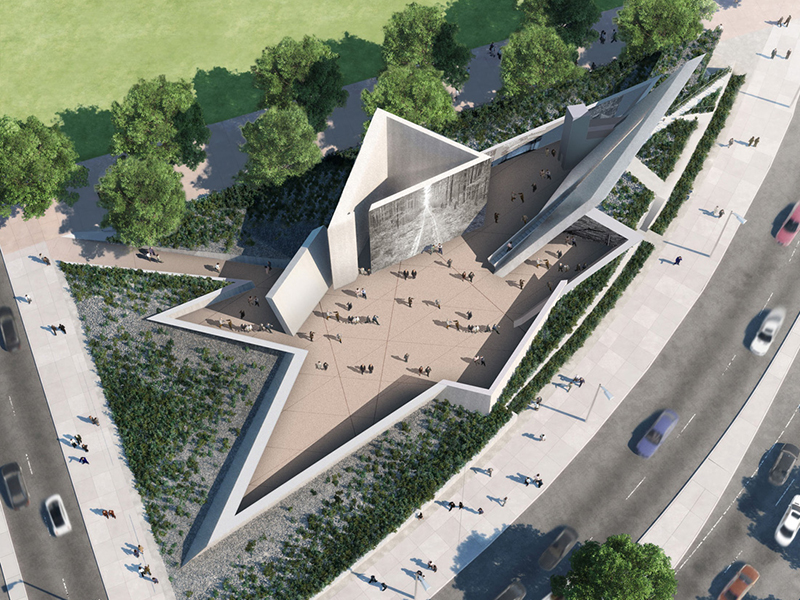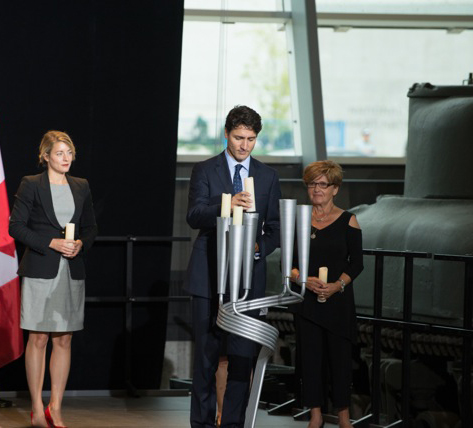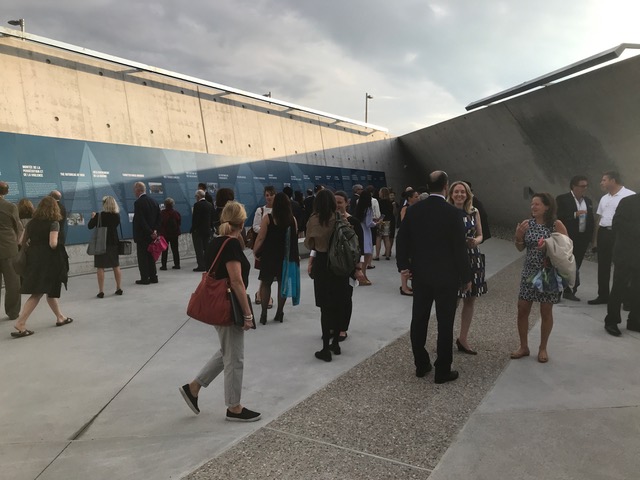The long-awaited inauguration of Canada’s National Holocaust Monument took place on Sept. 27, in spite of a dramatic rainstorm that forced the ceremony to be moved inside the adjacent Canadian War Museum.
In the presence of over 500 people from across the country, including many Holocaust survivors and their families, Prime Minister Justin Trudeau spoke of the importance of the monument for all Canadians.
“I have had the privilege, as prime minister, of visiting Holocaust memorial sites around the world,” he said. “We now have a place here in our nation’s capital where families can come together to learn, to ask those tough questions, to grieve and to remember.”
He also acknowledged the presence of Conservative Leader Andrew Scheer and NDP Leader Thomas Mulcair.

“This is one of those moments when all parties come together, remembering in solemn reflection something that we must never forget,” said Trudeau.
He noted that Canada was one of the first countries to officially recognize Israel, “but we must confirm the ugly truth that anti-Semitism is not just a thing of the past in Canada.”
Trudeau was referring to Canada’s refusal to take in Jewish refugees on the MS St. Louis in 1939, thus sending them to seek asylum in other countries, or back to Germany where many of them were murdered.
“May this monument remind us to always open our arms and our hearts to those in need,” said Trudeau.

The Liberals are currently working on a formal apology to the Jewish community for Canada’s decision to refuse entry to those passengers in 1939, which may take weeks or even months to prepare.
Centre for Israel and Jewish Affairs CEO Shimon Koffler Fogel said securing an apology has long been a priority for his organization.
“We’ve been engaged in productive conversations with parliamentarians on this issue and are grateful that Prime Minister Trudeau recognized this dark chapter in our history at the unveiling of the National Holocaust Monument.… Only by acknowledging our past mistakes can we ensure that in the future, our country will stand for what is right.”
Rabbi Daniel Friedman, chair of the National Holocaust Monument Development Council and the grandson of Holocaust survivors, said that “today is an extraordinary day in our history, but at the same time, today is a bittersweet day. The truth is that we would all rather not be here today.”
He said the monument is Canada’s newest icon and that the “monument will showcase to the world who we are and what we stand for.… Going forward, it will not just be about hockey and maple syrup.”
Algonquin Elder Claudette Commanda brought blessings on behalf of the Algonquin People, as the site is in Algonquin territory. She became emotional as she noted that Algonquin soldiers had helped liberate the concentration camps.
In her remarks, Heritage Minister Melanie Joly related the story of survivor Philip Goldig, who sang during the ceremony, and said that “it is the courage of these survivors and their willingness to share their experiences that will ensure that this never happens again.”

The monument, which is now open to the public, has been 10 years in the making, starting when then-18-year-old student Laura Grosman became interested in the life experience of grandfather, who survived the Shoah. Surprised and dismayed to discover that Canada had no monument to the Holocaust in its capital, she lobbied federal politicians to enact legislation to build one and, in 2011, a private member’s bill put forward by Conservative MP Tim Uppal was enacted into law.
The monument, which consists of six triangular concrete structures in the shape of a star, is situated at the corner of Booth and Wellington streets, next to the Canadian War Museum.
Following the inauguration, as the rain had then ended, people were invited to visit the monument.
READ: JOURNEY OF A CANADIAN NATIONAL HOLOCAUST MEMORIAL: BRINGING MY TEENAGE DREAM TO LIFE
Sidney Zoltak, co-president of Canadian Jewish Holocaust Survivors and Descendants, said in a statement that, “As the survivor population declines, we must ensure future generations bear witness to the lessons and memory of the Shoah. We express deep appreciation to all who played a role in making this monument a reality. May it always serve as a caution of the dangers of unchecked evil and the unspeakable cost of silence in the face of anti-Semitism and hatred.”
Friends of Simon Wiesenthal Centre for Holocaust Studies president and CEO Avi Benlolo said the unveiling of the monument comes at a time when anti-Semitism and hate is on the rise.
“Hopefully this can act as an educational tool for all, not only making the Holocaust a more prominent discussion in classrooms, but also opening people’s eyes to the consequences of intolerance. This monument serves as a reminder of what took place during the Holocaust and honours the six million Jewish people murdered by the Nazis.”
